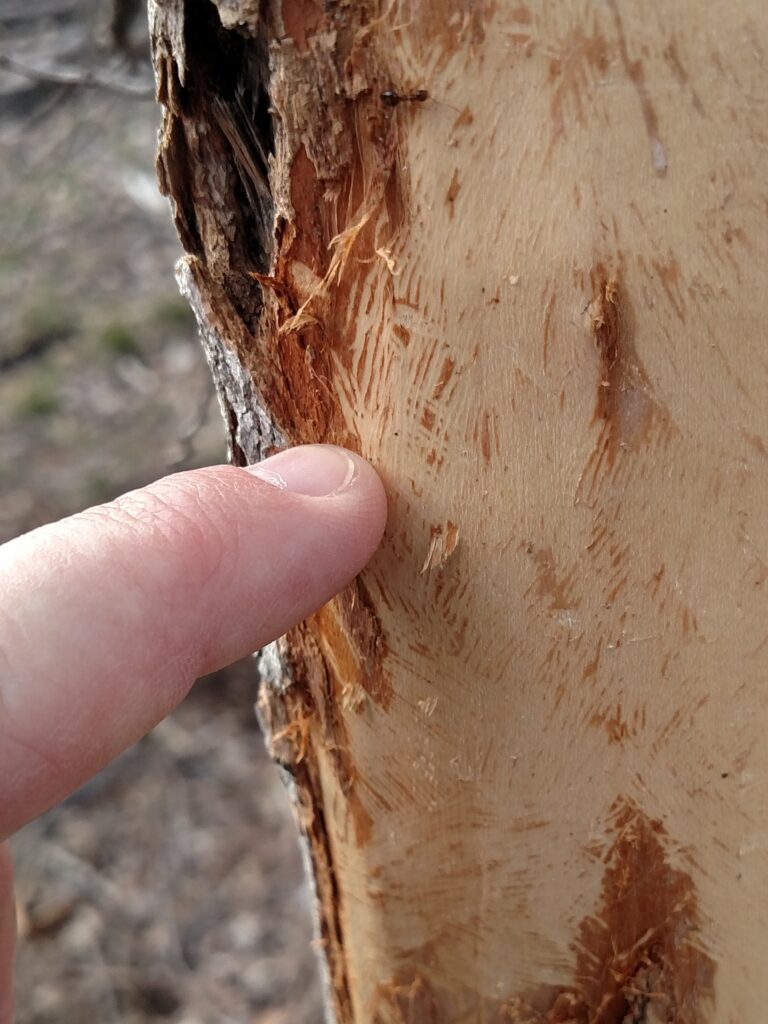By Linda Williams, DNR Forest Health Specialist, Woodruff
Linda.Williams@wisconsin.gov or 920-360-0665

Narrow grooves are left when squirrels chew the bark off a young tree or a branch.
Photo: Wisconsin DNR
In late winter, it’s common to see tree branches that have been freshly stripped of their bark. Damage can be extensive where entire branches, and sometimes entire small trees, can be stripped of bark. This damage, believe it or not, is from squirrels! While primarily found on sugar maples, you can also find squirrel damage on red maples and the occasional oak. So far this year, the damage has been noted in Langlade, Shawano, Oneida and Vilas Counties.
On sunny days, the pale wood of branches where the bark has been stripped off stands out in the forest. This type of feeding can remove enough bark to girdle the branches or the main stem, causing the tree to die from that point to the end of the branch. Branches that are not entirely girdled will continue to grow, and callus tissue will begin to grow over the wounds. If branches are nearly girdled, they may leaf out in the spring only to have the leaves suddenly wilt and die as hot weather hits because the tree can’t move enough water to keep the leaves alive.
Squirrels aren’t the only animals that strip the bark off trees. Porcupines will remove bark from both hardwoods and conifers. In determining what animal caused the damage, look closely at the size of the tooth marks where they scraped the bark off the tree. The incisor widths vary from 1.3-1.7 mm for a gray squirrel. A porcupine is nearly three times that, at about 3.6-4.8 mm.
Rabbits, mice and voles can cause similar damage, but it will be located near the tree’s base instead of in the crown.
To learn about control options, see UW Extension’s squirrel brochure.

The light-colored areas of this maple tree have been stripped of bark by squirrels.
Photo: Wisconsin DNR
